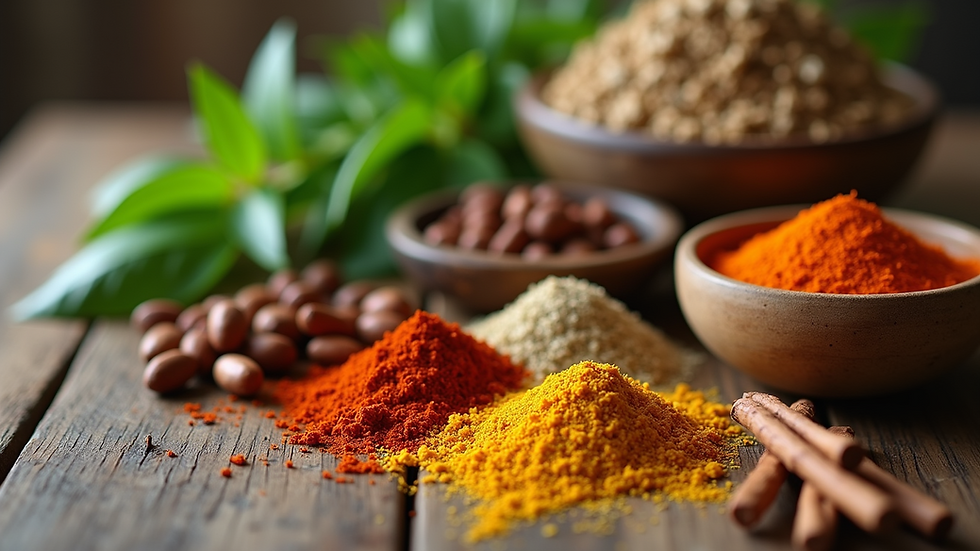Explore Panchakarma: Healing Through Ayurveda
- Sankar Kp
- Nov 15
- 3 min read
Panchakarma, a cornerstone of Ayurvedic medicine, offers a holistic approach to health and wellness. This ancient practice is designed to detoxify the body, rejuvenate the mind, and restore balance. With increasing interest in natural healing methods, understanding Panchakarma can empower individuals to take charge of their health. In this post, we will explore the principles of Panchakarma, its benefits, the procedures involved, and how to prepare for a Panchakarma retreat.

Understanding Panchakarma
Panchakarma translates to "five actions" in Sanskrit, referring to the five therapeutic procedures that cleanse the body of toxins (ama) and restore balance to the doshas (Vata, Pitta, and Kapha). These doshas represent the three fundamental energies in the body, and maintaining their balance is essential for optimal health.
The Five Actions of Panchakarma
Vamana (Therapeutic Vomiting)
This procedure helps expel excess Kapha from the body. It is particularly beneficial for conditions like asthma, obesity, and chronic cough.
Virechana (Purgation Therapy)
Virechana focuses on eliminating excess Pitta through the intestines. It is effective for digestive disorders, skin diseases, and liver dysfunction.
Basti (Enema Therapy)
Basti is a crucial treatment for balancing Vata. It involves administering medicated oils or herbal decoctions through the rectum, helping with conditions like constipation, arthritis, and neurological disorders.
Nasya (Nasal Administration)
This therapy involves the administration of herbal oils or powders through the nasal passages. It is beneficial for sinus issues, headaches, and mental clarity.
Raktamokshana (Bloodletting)
This procedure is used to detoxify the blood and is particularly effective for skin diseases and inflammatory conditions.
Benefits of Panchakarma
Panchakarma offers a multitude of benefits, making it a popular choice for those seeking natural healing methods. Here are some of the key advantages:
Detoxification
The primary goal of Panchakarma is to eliminate toxins from the body, which can lead to improved overall health.
Stress Relief
The treatments promote relaxation and reduce stress, contributing to better mental health.
Enhanced Digestion
By cleansing the digestive system, Panchakarma can improve nutrient absorption and alleviate digestive disorders.
Improved Immunity
Regular detoxification can strengthen the immune system, making the body more resilient to illnesses.
Rejuvenation
Panchakarma not only detoxifies but also revitalizes the body, promoting a sense of well-being and vitality.
Preparing for a Panchakarma Retreat
Embarking on a Panchakarma journey requires preparation to maximize the benefits. Here are some steps to consider:
1. Consultation with an Ayurvedic Practitioner
Before starting Panchakarma, it is essential to consult with a qualified Ayurvedic practitioner. They will assess your dosha, health history, and specific needs to tailor the treatment plan.
2. Dietary Adjustments
In the days leading up to your retreat, consider adopting a light, easily digestible diet. This may include:
Warm soups
Steamed vegetables
Herbal teas
3. Lifestyle Changes
Incorporate gentle yoga and meditation into your routine to prepare your body and mind for the detoxification process. This can help you transition smoothly into the retreat.
4. Hydration
Stay well-hydrated before your retreat. Drinking warm water and herbal teas can aid in the detoxification process.
The Panchakarma Experience
During a Panchakarma retreat, you will undergo a series of treatments designed to cleanse and rejuvenate your body. Here’s what to expect:
Daily Routine
Each day typically begins with a consultation to assess progress and adjust treatments as necessary. The daily schedule may include:
Herbal steam therapy to open the pores and prepare the body for detoxification.
Abhyanga (oil massage) to promote relaxation and enhance circulation.
Shirodhara (oil pouring on the forehead) to calm the mind and improve mental clarity.
Duration of Treatment
Panchakarma treatments can last anywhere from a few days to several weeks, depending on individual needs and health conditions. A typical retreat lasts about 7 to 14 days.
Post-Treatment Care
After completing Panchakarma, it is crucial to follow a post-treatment care plan. This may include:
Continuing a light diet
Engaging in gentle exercises
Practicing mindfulness and relaxation techniques
Conclusion
Panchakarma is a profound healing journey that can transform your health and well-being. By understanding its principles, benefits, and procedures, you can make informed decisions about your health. Whether you are seeking detoxification, stress relief, or rejuvenation, Panchakarma offers a holistic approach to healing through Ayurveda.
As you consider embarking on this journey, remember to consult with a qualified practitioner and prepare your body and mind for the experience. Embrace the opportunity to restore balance and vitality in your life through the ancient wisdom of Panchakarma.


Comments